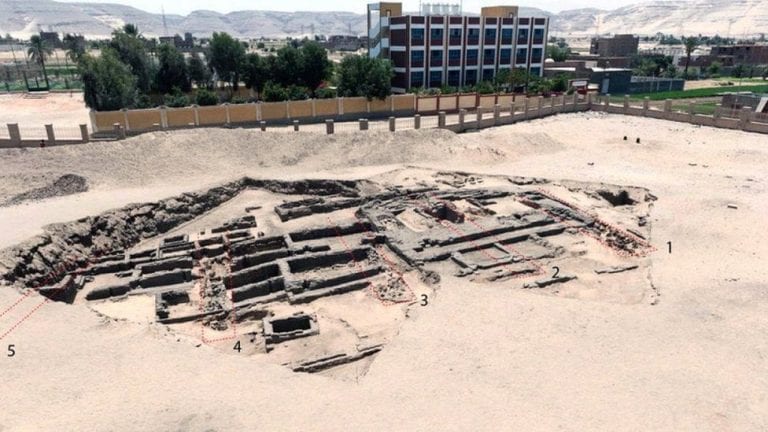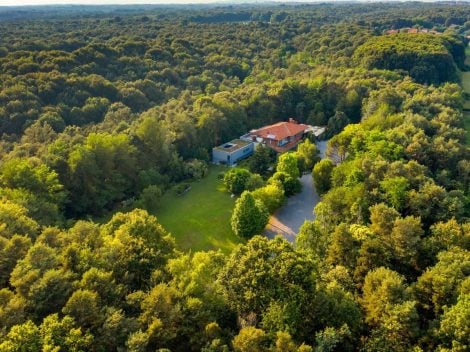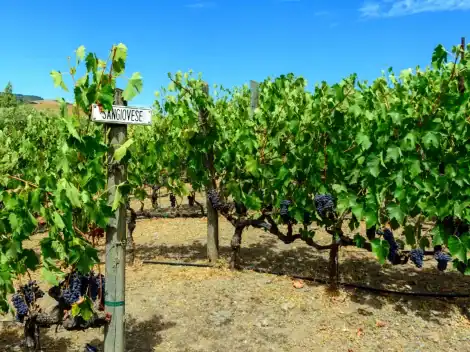Egypt: Abydos may be the oldest brewery in the world
That beer occupied a privileged place in the list of the most popular superfoods of Ancient Egypt was already widely known to experts. Used since 4500 as a medicine, a religious symbol and - if properly diluted - even as a substitute for breast milk during weaning, the popular alcoholic beverage obtained from the fermentation of spelt tasted very similar to our white wine (due to the presence of date cider in the yeast used as a "starter") and had a fairly high alcohol content, between 10 and 12 degrees. Where was it produced? and how much was consumed? Thanks to excavations at the Abydos archaeological site by Matthew Adams (a lecturer at the Institute of Fine Arts at New York University) and Deborah Vischak (a lecturer in art history and archaeology at Princeton University), it is finally possible to discover it. Researchers have uncovered the remains of a huge brewery in the heart of Sohag Governorate (west of the Nile River and about 450 km from Cairo). According to local authorities, it may be the oldest brewing centre ever found in Egypt.
What were the first "industrial breweries" in history like?
The discovery was announced by Mostafa Waziri, secretary general of the Supreme Council of Antiquities, who also put forward the first dating hypotheses. According to the conclusions of the investigation published by The Guardian, the brewery was built under the regime of the "warrior king" Narmer (3150-2613 BC), an enlightened sovereign to whom we owe the unification of Upper and Lower Egypt and the foundation of the residential nucleus that in the following years would see the city of Memphis rise. It is not excluded, therefore, that the structure was built for celebratory purposes, given the prestige acquired by the sovereign and the size of the structure, comparable to a large multinational beer company. Confirmed by the production volumes estimated by Adams, which reach 22,400 l per batch, and the optimisation of available space, divided into 8 large rooms equipped for the preparation of bread. Yes, you read that right: Egyptians made the drink from a dough very similar to that of the loaves of bread for daily consumption, which, after being baked at low temperatures in earthenware containers, was broken up coarsely, covered with water and fermented with the addition of dates and honey. Then, from time to time, women or children would trample on the cereal mash so as to encourage mashing. A rather complex process (we're still talking about 5000 years ago!) from which at least three types of beer were obtained: light (zythum), dark (curmy) and high nutrient, for the pharaoh (sa).
Beer culture in Egypt
Back to the archaeological site, the researchers have also found 40 places for the use of ceramic or terracotta vats, confirming the high volumes of beer produced on site; it could therefore be deduced that the inhabitants drank from them profusely. Adams' hypotheses, however, disprove the myth of excessive consumption for food purposes: the archaeologist suggests that the drink was used during the burial rituals of the pharaohs or, as evidenced by analyses of previous excavations carried out in the area, during sacrificial ceremonies to ingratiate the gods. "In any case, the Abydos brewery gives us an idea of the vastness of resources available to the rulers from the beginning of the Pharaonic dynasty, as well as their extraordinary ability to organise specialised work," Adams told the Cbs News outlet. " According to our calculations, 22,000 litres of beer could be used to serve one pint per person in a 40,000-seat sports stadium - unbelievable!". But it is not excluded that there is more: "We will continue to work around the site. In our opinion, the brewery is even bigger than we think. "
by Lucia Facchini


 “In Chianti, warehouses are full and prices are falling”. The economic crisis of Tuscan wine explained by Giovanni Busi
“In Chianti, warehouses are full and prices are falling”. The economic crisis of Tuscan wine explained by Giovanni Busi US tariffs will take effect on 1 August for everyone (including wine). Prosecco DOC: “it’s impossible to plan for the future
US tariffs will take effect on 1 August for everyone (including wine). Prosecco DOC: “it’s impossible to plan for the future Diego Rossi of Trippa opens a new osteria: what you can eat at Nino Osteria con Cucina in Milan
Diego Rossi of Trippa opens a new osteria: what you can eat at Nino Osteria con Cucina in Milan How you eat at Sentiero, the restaurant Elba Island was missing
How you eat at Sentiero, the restaurant Elba Island was missing






